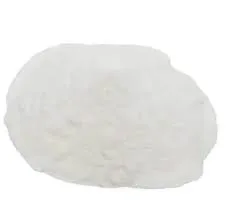
авг . 17, 2024 04:28 Back to list
Efficient Manufacturing Solutions for High-Performance Materials in Innovative Factories
Understanding HPMC Factory A Key Player in the Pharmaceutical and Construction Industries
Hydroxypropyl methylcellulose (HPMC) is a versatile cellulose ether that has gained widespread use in various industries, particularly in pharmaceuticals, construction, food, and personal care. The production of HPMC involves intricate processes that require careful attention to quality control and efficiency. This article delves into the significance of HPMC factories, their manufacturing processes, and their contributions to different sectors.
What is HPMC?
HPMC is a non-ionic polymer made from cellulose, a natural polymer derived from plant materials. It is known for its remarkable properties, including water solubility, film-forming abilities, and thickening characteristics. These attributes make HPMC a crucial ingredient in many formulations, ranging from tablet binding agents in pharmaceuticals to water-retention agents in construction materials.
The Manufacturing Process of HPMC
The production of HPMC begins with cellulose, which is chemically modified to achieve the desired properties. The basic steps typically involve
1. Cellulose Preparation Raw cellulose is extracted from natural sources, such as wood or cotton, and then purified to remove impurities.
2. Etherification The purified cellulose is dissolved and reacted with propylene oxide and methyl chloride, leading to the formation of hydroxypropyl and methyl groups. This step is critical as it determines the degree of substitution, which affects the solubility and viscosity of the final product.
3. Drying and Milling Once the reaction is complete, the resulting slurry is dried to produce HPMC powder. The powder is then milled to achieve the desired particle size, ensuring optimal performance in end applications.
4. Quality Control Throughout the manufacturing process, stringent quality control measures are implemented. This includes testing for consistency, purity, and functional properties to ensure that the HPMC produced meets industry standards.
hpmc factory

Applications of HPMC
HPMC finds applications in various sectors, proving its versatility
- Pharmaceuticals In drug formulations, HPMC serves as a binding agent, thickener, and film-forming agent. Its ability to control the release of active pharmaceutical ingredients (APIs) makes it ideal for sustained-release formulations.
- Construction HPMC is widely used in cement-based products, such as tile adhesives, joint compounds, and plaster. Its water-retention properties enhance workability and improve adhesion, which is crucial for the durability of construction materials.
- Food Industry As a food additive, HPMC acts as a thickener, stabilizer, and emulsifier. Its safety and effectiveness in food applications are well-established, making it a popular choice in processed foods.
- Personal Care Products In cosmetic formulations, HPMC is valued for its ability to enhance texture and stability. It is commonly found in lotions, creams, and gels.
The Importance of HPMC Factories
HPMC factories play a vital role in the supply chain of multiple industries. They not only contribute to the economy by providing employment opportunities but also drive innovation through research and development efforts. As global demand for high-quality HPMC continues to rise, factories are investing in advanced technologies and sustainable practices to meet industry needs while minimizing environmental impact.
In conclusion, HPMC factories are essential components of the manufacturing landscape, producing a critical ingredient that supports the functionality and efficacy of numerous products across diverse sectors. As industries evolve, these factories will undoubtedly play a pivotal role in pioneering new applications and ensuring the consistent supply of HPMC to meet the growing global demand.
-
The Widespread Application of Redispersible Powder in Construction and Building Materials
NewsMay.16,2025
-
The Widespread Application of Hpmc in the Detergent Industry
NewsMay.16,2025
-
The Main Applications of Hydroxyethyl Cellulose in Paints and Coatings
NewsMay.16,2025
-
Mortar Bonding Agent: the Key to Enhancing the Adhesion Between New and Old Mortar Layers and Between Mortar and Different Substrates
NewsMay.16,2025
-
HPMC: Application as a thickener and excipient
NewsMay.16,2025
-
Hec Cellulose Cellulose: Multi functional dispersants and high-efficiency thickeners
NewsMay.16,2025







